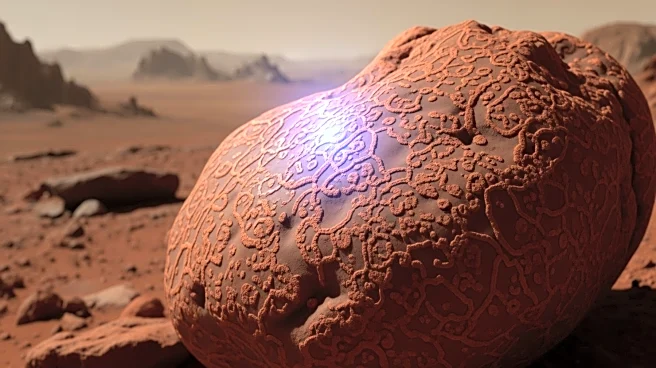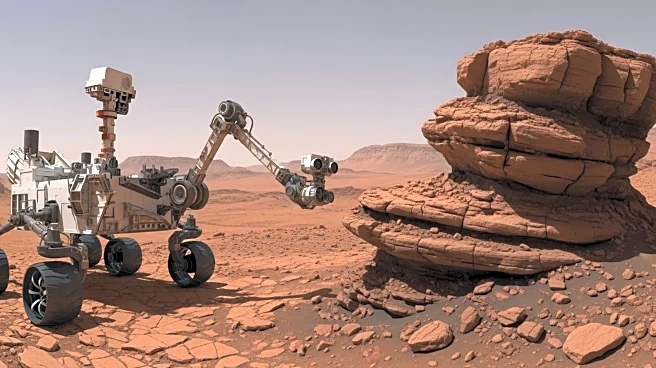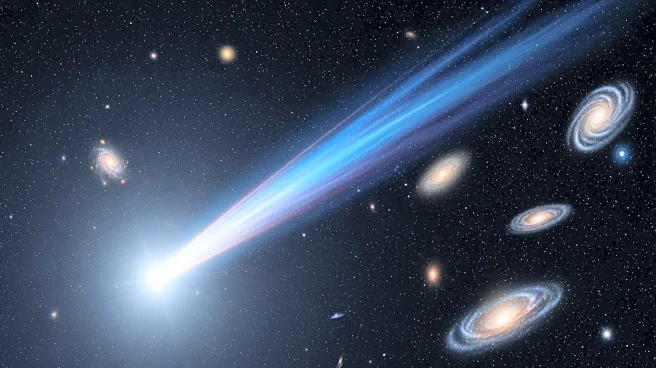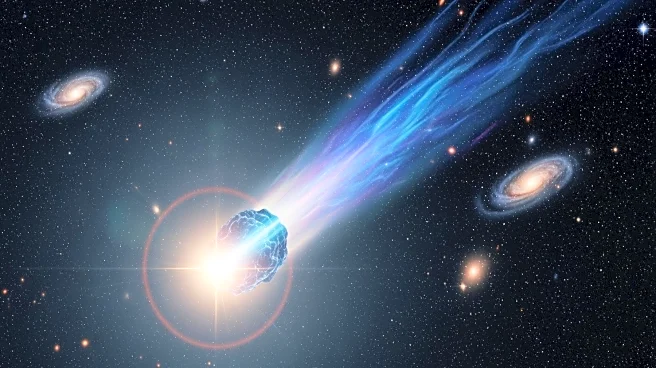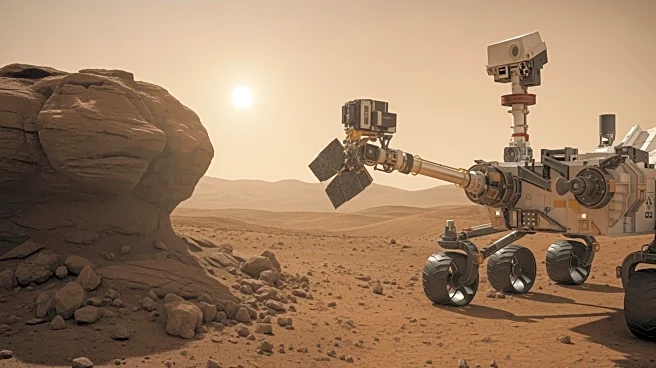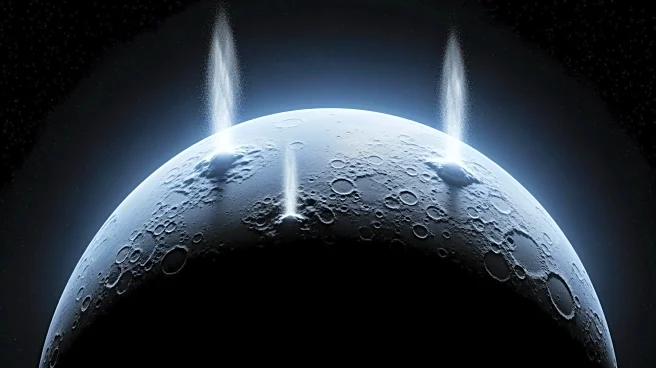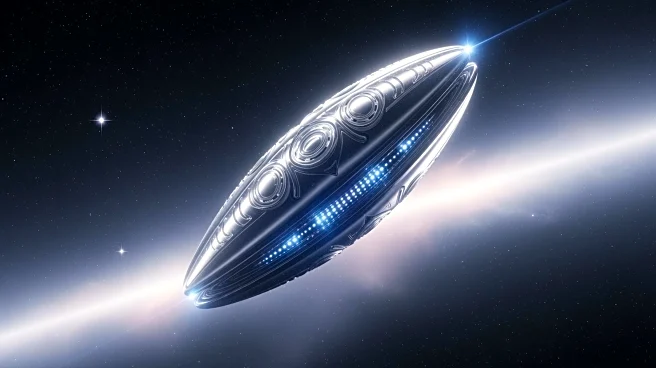What's Happening?
NASA has achieved several significant milestones this week, including the full assembly of the Artemis 2 mega-rocket, which is set to return astronauts to the Moon by early 2026. Additionally, the Perseverance
rover has discovered a Martian mudstone rock with potential biosignatures, suggesting possible past microbial life on Mars. Meanwhile, a rare interstellar comet, 3I/ATLAS, is passing through the solar system, providing valuable scientific data.
Why It's Important?
These developments underscore NASA's ongoing efforts to advance space exploration and scientific discovery. The Artemis 2 mission represents a critical step in returning humans to the Moon, while the potential biosignature on Mars could have profound implications for our understanding of life beyond Earth. The interstellar comet offers a unique opportunity to study celestial objects from outside our solar system, enhancing our knowledge of the universe.
What's Next?
NASA will continue preparations for the Artemis 2 mission, with a target launch date in early 2026. The Perseverance rover's findings will likely lead to further investigations and analyses to confirm the presence of past life on Mars. The interstellar comet will be closely monitored by telescopes and spacecraft to gather more data on its composition and trajectory.
Beyond the Headlines
These achievements highlight the importance of international collaboration and technological innovation in space exploration. The discoveries on Mars and the study of interstellar objects could inspire new scientific inquiries and missions, potentially leading to breakthroughs in our understanding of the cosmos.


